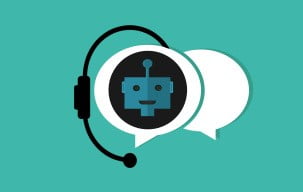
Image by Mohamed Hassan from Pixabay
Visit the customer service website for any company and you’ll likely encounter a chatbot. This isn’t surprising, given Gartner’s claim that not only will over 50 percent of medium to large enterprises have deployed them by 2020, but also that 85 percent of all customer service interactions will be handled by them.
There’s a problem, though. Chatbots remain very hit-and-miss in terms of usefulness to customers. While some studies show at least half of customers will elect to use them, reservations remain. A PwC report sums up tools like chatbots nicely: “[Customers] want … automation to ease experience. But these advances don’t matter much if speed, convenience and the right information are lacking.” The bottom line is that chatbots, like any technology, can be successful–it just requires some planning.
Purpose-driven
Just as with selection and use of other tools in customer service, a chatbot must solve a business problem. That problem is usually the common, higher-volume customer issues in the contact center. These are the problems that tend to tie down customer service agents and prevent them from addressing more complex issues. These types of problems should be the starting point for the chatbot.
Goal-oriented
With the issues for the chatbot to address identified, some metrics should be established to validate progress and success. What percentage of the total service volume will be addressed by the chatbot? For issues addressed by the chatbot, what percentage of customer service requests are handled by it vs. other channels? How much more quickly are customer solutions delivered with the chatbot vs. live agent interaction? Perhaps most importantly, what is the cost savings of chatbot aid over other channels?
Besides productivity and cost savings, customer satisfaction should also be measured. Request feedback from customers after their use. Validate they are receiving effortless and efficient service that exceeds their expectations. And how does chatbot service ratings compare to other channels?
Approachable
While efficient service is important, don’t let that stifle your chatbot. Consider ways to give it a personality.
Start by simply giving the chatbot a name. An existing brand spokesperson, if available, could be used. This takes some of the robotic nature out of the customer interaction.
In addition, what kind of voice should the chatbot have? Does it speak politely and formally, or does it have a more relaxed manner? Create an interaction style guide to ensure the chatbot’s scripted communication is consistent while avoiding words or phrases that might be unclear or offensive to customers.
Recommended for You
Webcast, September 17th: 10X Growth & Relationships with Community Building
Easy solutions
Much of the frustration cited in the above articles stems from chatbots being unable to solve problems quickly. In addition to having a clearly defined set of issues they address, successful chatbots must be backed by proven solutions.
Solutions offered by chatbots can tap into other self-service options available. Knowledgebase articles are an excellent choice. Others might include directing customers to automated solutions such as information submission forms (for example, to register a product) or to perform other common tasks.
Buddied-up
Chatbots aren’t at the point yet to reason and troubleshoot like a customer service agent. If the chatbot’s scope doesn’t include the customer’s problem, it should quickly offer to perform a transfer to a live customer service agent so as to not to waste the customer’s time.
When this transfer occurs, all of the customer’s interaction–name or identifying information as well as the chat transcript including any possible solutions offered–must be handed over to the customer service agent to provide them with a starting point. Requiring the customer to repeat details of the chat only further wastes their time and must be avoided.
Agents won’t always be available at high volume times or outside business hours. In these scenarios, the chatbot should offer to create a case for follow-up by a customer service agent at a later time, with expectations set as to when the customer can expect a response.
Ever-learning
The marvel of language is the many ways in which humans can express themselves. Chatbots are scripted to function based on keywords and phrases used by customers, and that creates limitations. However, advances in natural language understanding and natural language processing are narrowing those gaps.
Periodically review chat transcripts of both successful and unsuccessful interactions. What words and phrases were used? Use that information to improve the connection between how customers are conversing with the chatbot and the solutions it can provide. Interaction logs also provide ideas for new issues to add to the chatbot’s library.
Better with time
Chatbots are becoming more common in customer service, working alongside agents to help solve customer problems. They will continue to take more and more of the mundane work off the shoulders of customer service. In time, chatbots will advance to the point where they can even diagnose and solve new issues.
But chatbot technology is still evolving. Like any new customer service tool, a chatbot can quickly fail without proper planning. With careful consideration and imbuing it with the right traits, though, a chatbot can quickly become a valuable, productive member of the customer service team.
